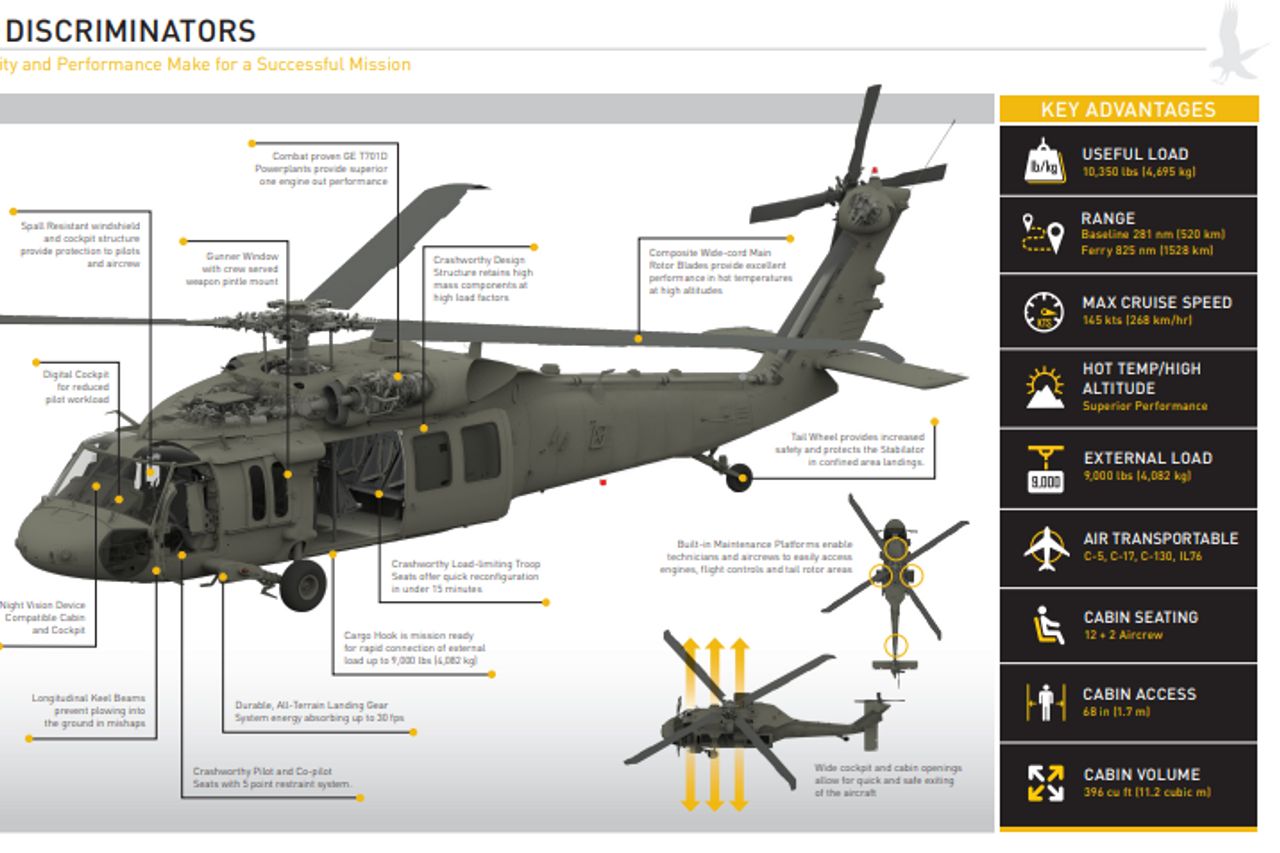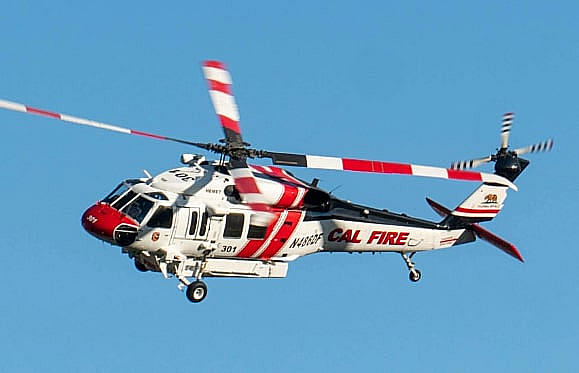Revealing the Sikorsky S 70: Advancements and Developments in Helicopter Design
High-Performance Multi-Role Rotorcraft Featuring Advanced Cabin Technologies and Integrated Sensing Unit Systems
The world of rotorcraft innovation has seen noteworthy improvements in current times, especially in the world of high-performance multi-role rotorcraft furnished with innovative cabin technologies and seamlessly integrated sensing unit systems. In the following discussion, we will certainly explore the development of rotorcraft modern technology, dive right into the realm of advanced cockpit developments, and analyze the effects of incorporated sensing unit systems on the operational flexibility and efficiency of contemporary rotorcraft.
Development of Rotorcraft Innovation
The evolution of rotorcraft modern technology has actually been marked by substantial developments in the rules of aerodynamics, products, and propulsion systems, shaping the abilities and performance of modern-day rotorcraft. Additionally, improvements in propulsion systems, consisting of a lot more powerful engines and ingenious propulsion modern technologies, have made it possible for rotorcraft to achieve higher elevations, faster rates, and higher payloads.
These improvements have not just transformed the abilities of rotorcraft yet have actually likewise broadened their applications throughout numerous markets, including military, commercial, and emergency solutions. The constant development of rotorcraft innovation proceeds to drive innovation in the area, pushing the limits of what is feasible and shaping the future of upright trip.
Advanced Cockpit Innovations
Structure upon the fundamental developments in aerodynamics, products, and propulsion systems, the realm of rotorcraft innovation now changes focus in the direction of introducing Advanced Cockpit Innovations. The assimilation of cutting-edge modern technologies within the cockpit atmosphere plays a crucial duty in boosting the operational capacities, safety and security, and performance of modern rotorcraft. sikorsky s 70. Advanced Cockpit Innovations incorporate a vast range of features made to give pilots with boosted situational understanding, streamlined information monitoring, and intuitive control user interfaces
Among the crucial advancements in cabin design is the application of glass cabins, which replace traditional analog gauges with high-resolution display screens. These digital systems provide adjustable formats, real-time information assimilation, and boosted readability, allowing pilots to gain access to important details at a look. Progressed avionics systems, such as fly-by-wire controls and increased fact display screens, are revolutionizing how pilots communicate with the aircraft, enabling for exact control and improved decision-making abilities.


Incorporating advanced cabin advancements not only enhances pilot performance yet likewise contributes to total goal efficiency and safety in intricate operational environments. By leveraging modern modern technologies within the cockpit, rotorcraft manufacturers are establishing brand-new requirements for functional excellence and goal success.
Integrated Sensor Systems
With the advancement of rotorcraft innovation, the integration of innovative Integrated Sensor Equipment has ended up being critical in boosting operational performance and security. These Integrated Sensing unit Systems incorporate a broad selection of innovations that give vital data for different features such as navigating, surveillance, targeting, and ecological monitoring. By effortlessly incorporating sensors like radars, cams, lidar, and infrared systems right into rotorcraft, operators can take advantage of boosted situational awareness, improved goal capabilities, and decreased pilot work.
One trick benefit of Integrated Sensor Systems is their capability to collect real-time information and provide actionable understandings to pilots and goal drivers. Advanced radar systems can find and track targets over long ranges, allowing for very early danger detection and efficient response planning. Furthermore, incorporating infrared and electro-optical cameras allows rotorcraft to carry out reconnaissance and monitoring goals with accuracy and precision.
Essentially, the combination of sophisticated sensing unit modern technologies right into rotorcraft not only improves operational effectiveness but also contributes considerably to overall mission success and crew safety and security. As rotorcraft proceed to advance, the duty of Integrated Sensing unit Solution will most certainly continue to be at the center of advancement in the aerospace market.
Operational Flexibility and Efficiency
Enhancing operational versatility and efficiency in rotorcraft is an all-natural development from the combination of advanced Integrated Sensor Systems. By leveraging the data and understandings given by these innovative sensor systems, rotorcraft can maximize their performance across numerous objectives and environments.
Functional adaptability encompasses the capacity of rotorcraft to adjust to different duties and situations efficiently. With innovative cockpit technologies and incorporated sensor systems, rotorcraft can flawlessly shift between jobs such as search and rescue, medical emptying, surveillance, and much more. This versatility boosts the rotorcraft's capability to fulfill diverse functional needs without needing extensive reconfiguration.
Effectiveness in rotorcraft procedures is important for making best use of objective performance and resource application. Integrated sensor systems play a crucial role in improving functional performance by offering real-time information on climate conditions, terrain mapping, target monitoring, and extra. This data allows pilots to make educated choices swiftly, enhance flight courses, conserve gas, and enhance general goal productivity.
Influence on Modern Aviation Procedures

Additionally, the assimilation of sophisticated sensors assists in improved goal planning and implementation, enabling go to this web-site rotorcraft to do a vast array of tasks with boosted accuracy. From search and rescue operations to aerial firefighting and law enforcement objectives, the capacities of contemporary rotorcraft equipped with sophisticated cabin innovations and incorporated sensor systems are unparalleled.
Additionally, the influence of these developments expands beyond functional efficiency to cost-effectiveness and sustainability. By optimizing trip courses, fuel usage, and upkeep schedules, high-performance rotorcraft outfitted with advanced cockpit modern technologies and sensors add to minimizing functional costs and environmental influence, making them vital properties in modern air travel procedures.
Final Thought
To conclude, the high-performance multi-role rotorcraft with innovative cabin modern technologies and incorporated sensing unit systems stands for a significant evolution in air travel innovation. These technologies boost functional convenience and performance, ultimately impacting modern aviation operations in a favorable way. The integration of these advanced technologies allows for improved capabilities and performance in various goal circumstances, showcasing the proceeded innovation of rotorcraft modern technology in the aeronautics market.
The world of rotorcraft innovation has seen notable developments in recent times, especially in the realm of high-performance multi-role rotorcraft furnished with innovative cabin modern technologies and flawlessly incorporated sensing unit systems. From improved goal convenience to enhanced operational efficiency, the convergence of sophisticated cabin modern technologies and incorporated sensing unit systems has ushered in a new age of opportunities for rotorcraft applications. In the adhering to conversation, we will certainly explore the development of rotorcraft innovation, dig into the world of innovative cockpit developments, and analyze the implications of incorporated sensor systems on the operational versatility and performance of contemporary rotorcraft.
"/>